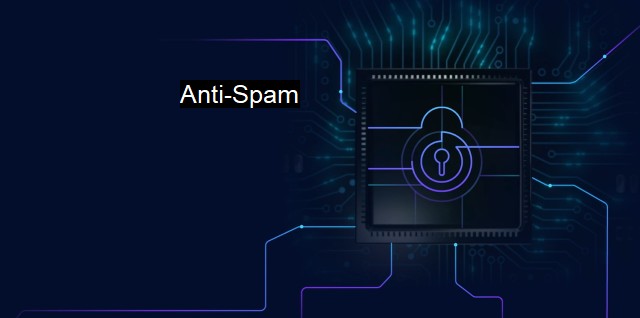What is Anti-Spam?
The Importance of Effective Anti-Spam and Antivirus Measures in Cybersecurity
"Anti-spam" is a popular cybersecurity term you will undoubtedly encounter in the context of online communication, internet browsing, and antivirus programming. It refers to a collective suite of techniques, software tools, and procedures designed to prevent unwanted or harmful messages, known as spam, from infiltrating user systems. These messages typically come in the form of emails, comments, or pop-up ads.Spam messages are a global nuisance, often used as tools by nefarious actors to trick individuals into exposing their personal information, clicking on malicious links, or installing harmful software—generally for the purposes of fraud or spreading malware. due to industry-wide advancements in cyber defense mechanisms, this threat is far less potent than it once was. A significant reason behind these reductions in risk is the advent and implementation of anti-spam methodologies.
When exploring the world of anti-spam, it's important to understand the driving components behind the term. Anti-spam filters often form the first line of defense in the onslaught against spam. They work diligently to identify and block spam messages, preventing them from reaching the user inbox. These identification processes often utilize a variety of techniques including IP reputation checking, contextual analysis, header checking, and more. machine learning algorithms are robust tools in the fight against spam, capable of detecting patterns and learning from accumulated data over time.
In addition to filters, anti-spam software also includes a range of other tools designed to combat spam. These may include Email Clients with built-in spam detection, Internet Service Provider based solutions, 3rd party applications, cloud-based applications, and company-wide antivirus programs. Many of these anti-spam tools showcase functionalities that go beyond simple spam management, offering complete packages that include antivirus scanning, anti-phishing tools, firewall settings, and more.
When paired with an antivirus system, an anti-spam structure becomes even more formidable. Anti-spam methodologies often focus on blocking, filtering, or quarantining suspicious emails before they move to user inboxes. Simultaneously, antivirus mechanisms behave proactively to detect and eliminate malicious programs that may have breached the primary layers of security somehow. The anti-spam portion can effectively check for spammed content and suspicious links, while the antivirus can actively work in tandem by scanning and removing any detected threats.
Despite wielding powerful tools, anti-spam provisions are far from infallible. Challenges do persist. For instance, spammers are continually evolving and adapting, tasks made easier by advancements in technology and new methods of online communication. They tactically use approaches such as text alteration in mails, image-based spam, and more to bypass spam filters.
Also, the anti-spam mechanism has a responsible yet tricky task — differentiating between legitimate emails and spam amidst a sheer volume of incoming messages. While mechanisms have grown more accurate in their recognition skills, issues of 'false positives' (i.e., legitimate emails incorrectly flagged as spam) do occur.
Complementing ongoing cybersecurity strategies with robust anti-spam protocols is imperative for maintaining cyber hygiene. By acting as an additional layer of protection, anti-spam solutions significantly augment cybersecurity landscapes, safeguarding sensitive information and preventing spam emails packed with phishing attempts or harmful malware.
It is a vital part of personal, corporate, and internet-wide security measures. By combining the power of sophisticated algorithms and advanced technological tools, anti-spam efforts are continuously maintaining cyber health and fortifying the digital world against an ever-evolving range of threats. Despite being challenges, they play a key role in preserving online safety, privacy, and the uninterrupted continuity of cyber activities.

Anti-Spam FAQs
What is anti-spam technology and how does it work?
Anti-spam technology refers to a set of tools and techniques used to prevent incoming spam emails from reaching the inbox of the user. It works by using various methods such as content analysis, sender authentication, and reputation scoring to identify and block spam emails.What are the risks of not having anti-spam protection?
Not having anti-spam protection poses several risks, such as being vulnerable to phishing attacks, malware, and other types of cyber threats. In addition, unsolicited emails can consume valuable bandwidth and storage space, impacting the performance of the network and slowing down productivity.What are the different types of anti-spam solutions available?
There are several types of anti-spam solutions available, including cloud-based and on-premises solutions, email filters, content analysis tools, and sender authentication protocols. Each solution has its own strengths and limitations, and organizations can choose the most effective solution based on their specific needs and requirements.Can anti-spam technology completely eliminate spam?
While anti-spam technology can significantly reduce the amount of spam emails that reach the inbox, it cannot completely eliminate spam. Cybercriminals are constantly evolving their tactics and technologies to bypass security measures, and some spam messages may still slip through the cracks. However, using anti-spam technology can greatly reduce the risk of receiving spam and improve overall cybersecurity.| | A | | | B | | | C | | | D | | | E | | | F | | | G | | | H | | | I | | | J | | | K | | | L | | | M | |
| | N | | | O | | | P | | | Q | | | R | | | S | | | T | | | U | | | V | | | W | | | X | | | Y | | | Z | |
| | 1 | | | 2 | | | 3 | | | 4 | | | 7 | | | 8 | | |||||||